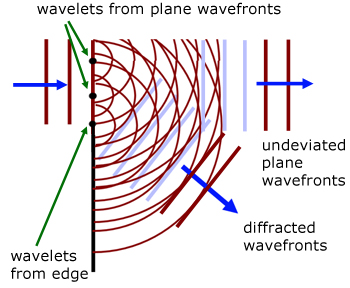

The reason is simple: The situation with two slits open at once is not the same as the combination of having the slits open separately. This is indeed an application of the superposition principle, though an incomplete one. What happens when both slits are open? It is common practice in textbooks to call the solution Ψ A + Ψ B to represent the fact that the particle is in a superposition state in which it is passing through both slits. The solutions to the wave equation describing a particle in this system can be labeled Ψ A when slit A is open and Ψ B when slit B is open. Imagine the classic experiment and let the two slits be named A and B, respectively. Our research, however, has revealed a flaw in the way physicists have traditionally dealt with wave-equation calculations when they are applied to the double-slit experiment. These solutions express the probability amplitude of the particle being in any particular state. Quantum theory describes fundamental particles not just as physical waves but also as being determined by the so-called wave equation, whose solutions may be designated by the Greek letter psi, Ψ. Using the triple-slit system, we can create three-dimensional qudits called qutrits.Ĭredit: Nick Bockelman The Superposition Principle Whereas most of the community is working on increasing the number of qubits in a system, my lab is trying an alternative, less explored approach by using higher-dimensional “qudits” instead of two-dimensional qubits. One of the central challenges in quantum computing is finding a way to increase the number of bits a quantum computer contains, called qubits, without destroying the superposition that allows qubits to be in two states at once-the key to achieving huge gains in computing speed. Quantum computers promise to enable calculations that were previously intractable-if we can harness the power of quantum physics to build them. Our triple-slit experiment architecture also offers intriguing opportunities in the emerging field of quantum computing. On the theory side, our triple-slit trials have clarified how the superposition principle applies in these circumstances and have revealed new subtleties in our fundamental understanding of this phenomenon. It is a seemingly simple adjustment, but it has profound consequences. Recently my team at the Quantum Information and Computing laboratory at the Raman Research Institute in Bangalore, India, has set up “triple-slit” experiments in the microwave-wavelength range-instead of two slits, we use three. In the double-slit experiment, particles must not be traveling through one slit or the other-for interference to occur, each particle must be traveling through both.Īs celebrated as this experiment is, we have not yet plumbed its depths. It also establishes the superposition principle: particles can exist in multiple states and even simultaneously in multiple places. It clearly demonstrates the fundamental strangeness of quantum mechanics: that light, and matter as well, is in fact both a particle and a wave-a concept known as wave-particle duality. It has been repeated many times, with particles of both light and matter. To this day, the double-slit experiment, with its inherent simplicity of concept, remains one of the most intriguing tests ever performed. Instead you get two lines of light on the screen, just what you would expect if point particles and not waves were passing through-as if the act of measurement changed the nature of the particles. Even stranger, if you place a detector by the slits to record which slit each particle passes through, the interference pattern disappears. Or was it? Weirdly, in experiments centuries later in which researchers took care to shine only one photon at a time toward the wall, the interference pattern remained, as if a single particle were interfering with itself. When Young performed the experiment, using a modified setup, it seemed to establish that light was a wave and not a particle. This pattern results only if the photons act like waves rather than like point particles, and the peaks and troughs of the waves coming through the two slits interfere with one another, sometimes adding light and sometimes canceling it out. When the light reaches a screen behind the wall, it produces a telltale “interference pattern”: stripes of light interspersed with darkness. In the experiment, first proposed in 1801 by British polymath Thomas Young, a beam of photons-particles of light-flies toward a wall with two slits cut in it.

“All of the mystery of quantum mechanics” is contained within the double-slit experiment, Nobel laureate Richard Feynman famously said.


 0 kommentar(er)
0 kommentar(er)
